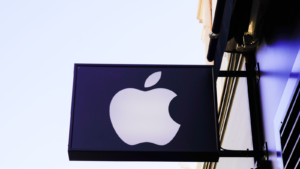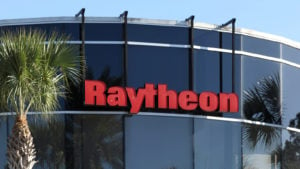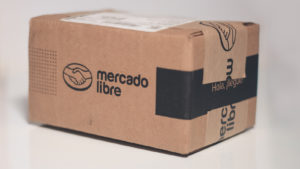Large-cap stocks are always great to have in a portfolio. These companies are some of the biggest and best-known stocks in the market. That makes finding the best large-cap stocks a worthy exercise.
Of course, in this market, it can be a challenge to identify the best large-cap stocks. With the Dow Jones Industrial Average down more than 16% and other major indices down more than that, you just can’t throw darts at a board to find your winners.
For this list, I use my Portfolio Grader exclusive tool to find the best large-cap stocks to buy and hold.
The Portfolio Grader assigns stocks a letter grade based on fundamentals such as sales growth and operating margin. And its factors in buying pressure and other quantitative factors that help predict a stock’s future performance.
Here are seven large-cap stocks to buy and hold that get strong ratings from the Portfolio Grader.
| ELV | Elevance Health | $495.32 |
| WMT | Walmart | $150.23 |
| AAPL | Apple | $151.29 |
| RTX | Raytheon Technologies | $95.36 |
| QCOM | Qualcomm | $123.85 |
| MELI | MercadoLibre | $962.08 |
| JNJ | Johnson & Johnson | $176.20 |
Elevance Health (ELV)

Formerly known as Anthem, Elevance Health (NYSE:ELV) is the largest for-profit company providing health insurance under the Blue Cross Blue Shield brand. All and all, it’s one of the top-rated large-cap stocks to make a long-term holding.
Although it’s still moving higher, as the market pulls back, ELV stock trades at a favorable valuation (15x forward earnings). It can easily sustain this earnings multiple, as it’s expected to continue growing its earnings per share by around 12.8% next year, and by about 13.6% in 2024.
Elevance could continue to climb, in tandem with increased EPS. Its current forward yield of 1.05% may seem tiny, yet in time, it could grow to become mighty. Its low payout ratio (15.7%) leaves ample room for dividend growth.
This stock earns an “A” rating in my Portfolio Grader.
Walmart (WMT)

With about 10,500 stores and clubs around the world, Walmart (NYSE:WMT) is one of the biggest retailers on the planet. It’s one of the most successful.
WMT stock is down about 7% on the year. That’s nothing to get excited about until you consider that competitor Target (NYSE:TGT) is down 32% so far this year. Walmart’s biggest competitor in the e-commerce space, Amazon (NASDAQ:AMZN) is down 33% on the year.
After a rough first quarter in which Walmart both failed to meet expectations and lowered its full-year guidance, Walmart is enjoying a bit of a resurgence. Q2 results was better than anticipated, beating expectations on both the top and bottom lines.
Walmart reaffirmed its outlook for the rest of the year, which should give investors some confidence.
Walmart stock has a “B” rating in the Portfolio Grader.
Apple (AAPL)

If you want to talk about a large-cap stock to buy and hold, they don’t get much bigger than Apple (NASDAQ:AAPL), which carries a market capitalization of $2.3 trillion.
The smartphone maker recently rolled out its iPhone 14 – smartly priced at an affordable $799 – as well as new versions of its Airpods Pro and Apple Watch.
Apple is a great stock because it’s a great company that continues to churn out products that are in high demand.
Apple has more than a 55% share of the U.S. smartphone market. Its annual rollout of upgraded smartphones and other products has become a must-watch event for both Wall Street and Apple fans.
Granted, AAPL stock has been a disappointment so far this year, down nearly 19% in 2022, but the company is doing a credible job of managing expectations.
Apple gets a “B” rating in the Portfolio Grader.
Raytheon Technologies (RTX)

Defense company Raytheon Technologies (NYSE:RTX) is having a solid year in the scheme of things.
While most of the market is in the red, defense conglomerates like Raytheon are managing to hold their own – and even gain a little in stock price.
Raytheon, the parent of Collins Aerospace and Pratt & Whitney, is a missiles and defense manufacturer.
It partnered with Lockheed Martin (NYSE:LMT) to make Javelin anti-tank missiles that Ukraine is using to defend itself from Russian forces. It also makes the Stinger anti-aircraft missiles that Ukraine is using in the conflict.
The need for military equipment high – and will likely keep contractors like Raytheon busy.
RTX stock has a “B” rating in the Portfolio Grader.
Qualcomm (QCOM)

Qualcomm (NASDAQ:QCOM) is in an enviable position as the nation converts to 5G technology.
Qualcomm actually owns several patents that are critical to the manufacturing of semiconductors that make 5G wireless technology possible.
The fifth-generation mobile network is a great place to invest. It provides higher multi-gigabit peak data speeds and better reliability to give mobile users the same streaming experience as someone using an ultra-fast wired connection.
That has a lot of great applications, including for the growth of smart cities, improved streaming video, better virtual meetings and medical appointments, and even improved experiences for virtual reality, sports betting and gaming.
QCOM stock is killing it in its earnings reports. For the third quarter, revenue of $10.93 billion beat expectations of $10.85 billion, and EPS of $2.96 was better than expectations for $2.87.
QCOM stock has a rosy future and carries a “B” rating in the Portfolio Grader.
MercadoLibre (MELI)

When you think of MercadoLibre (NASDAQ:MELI), you can probably think about Amazon, but in Latin America.
MercadoLibre operates the largest e-commerce and digital payments systems in Latin America, operating in 18 countries. Its platforms include Mercado Libre, Mercado Pago (a digital payments platform) and a Mercado credit service.
Like Amazon, MercadoLibre has had a rough 2022, down nearly 40%. Even taking those losses into account, MELI stock has five-year growth of 248%, which is much better than the 138% growth of AMZN stock over the same period.
With the stock price down big but revenue continuing to roll in, MELI appears to be a compelling buy. It has a “B” rating in the Portfolio Grader.
Johnson & Johnson (JNJ)

Founded in 1886, Johnson & Johnson (NYSE:JNJ) makes consumer packaged goods, pharmaceuticals, medical devices, and more.
All of those products are must-haves for consumers – which means that even when inflation is up and discretionary income is squeezed, people will need to buy JNJ products first. And that’s just one reason why JNJ, with a market capitalization of $441 billion, is outperforming the market. JNJ is down only 2% in 2022.
Earnings are solid as well, with Q3 revenue of $23.79 billion better than analysts’ expectations of $23.43 billion. EPS of $2.55 was 6 cents per share better than analysts’ expectations.
On top of that, JNJ provides a solid dividend yield of 2.7%. That helps push JNJ to a “B” rating in the Portfolio Grader.
On the date of publication, Louis Navellier did not hold (either directly or indirectly) any positions in the securities mentioned in this article.
On the date of publication, the InvestorPlace Research Staff member primarily responsible for this article held AAPL stock.
